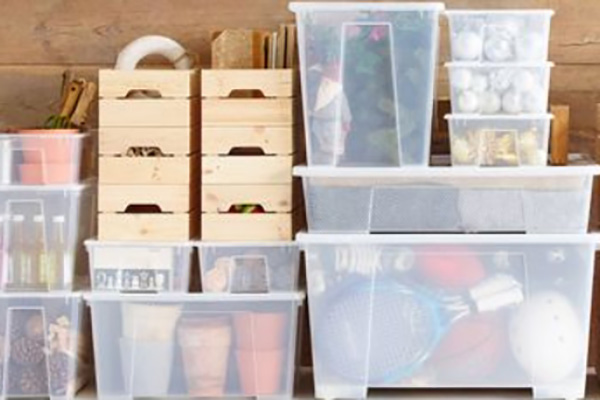When it comes to long-term storage, choosing the right material is crucial to ensure that your items remain protected over time. Among the various options available, plastic stands out for its durability, versatility, and cost-effectiveness. But not all plastics are created equal, especially when it comes to preserving valuable or sensitive items for extended periods. Understanding the types of plastic used in a plastic storage box and their specific benefits can help you make an informed decision about the best option for your long-term storage needs.
Why Plastic for Long-Term Storage?
Plastic is a popular choice for storage because of its lightweight nature, ease of handling, and resistance to moisture and pests. Unlike materials like cardboard or wood, plastic doesn’t easily degrade, rot, or attract insects, making it an excellent option for protecting items over time. Additionally, plastic storage boxes are available in a wide range of sizes, shapes, and designs, offering flexibility for different storage needs, whether it’s clothing, documents, electronics, or tools.
Types of Plastic Used in Storage Boxes
Different types of plastic are used to manufacture storage boxes, each with its unique properties. The choice of plastic depends on factors such as the expected durability, environmental conditions, and the type of items being stored. Here are the most common types of plastic used in long-term storage boxes:
1. Polypropylene (PP)
Polypropylene is one of the most widely used plastics for long-term storage boxes due to its excellent balance of strength, durability, and resistance to chemical and environmental factors. PP plastic is known for being lightweight yet strong, making it ideal for storage boxes that need to be moved or stacked. It is also resistant to moisture, making it suitable for environments prone to humidity or dampness.
Another advantage of polypropylene is its resistance to many acids, alkalis, and solvents, which can be crucial when storing items that might be sensitive to chemical exposure. Additionally, PP plastic has a relatively high melting point, meaning it can withstand higher temperatures without warping or degrading. This makes it a good choice for long-term storage in areas that may experience temperature fluctuations.
2. High-Density Polyethylene (HDPE)
High-density polyethylene, or HDPE, is another popular material for plastic storage boxes. Known for its strength and impact resistance, HDPE is often used in heavy-duty storage boxes designed for tougher environments. This plastic is also highly resistant to moisture, which helps prevent the growth of mold and mildew, especially in long-term storage scenarios.
HDPE’s high strength-to-density ratio makes it ideal for storing heavier items without the risk of the box bending or cracking under pressure. It is also UV-resistant, making it suitable for outdoor storage where the box may be exposed to sunlight over long periods. HDPE is commonly used in industrial-grade storage solutions as well as in consumer products where durability is a key concern.
3. Polycarbonate (PC)
Polycarbonate is a high-performance plastic known for its transparency and exceptional strength. While it’s more expensive than other types of plastic, it offers superior protection for items that require extra care, such as electronics, valuable documents, or delicate items. Polycarbonate plastic storage boxes are often clear, allowing for easy identification of contents without the need to open the box.
One of the key features of polycarbonate is its impact resistance, which is significantly higher than other plastics. This makes it an excellent choice for storage in environments where the box might be subjected to knocks, drops, or other physical stresses. Moreover, polycarbonate has excellent temperature resistance, making it suitable for storage in both hot and cold conditions without becoming brittle or warped.
4. Acrylonitrile Butadiene Styrene (ABS)
Acrylonitrile butadiene styrene, or ABS, is another durable plastic commonly used in storage solutions. Known for its toughness and rigidity, ABS is often used in plastic storage boxes that need to withstand significant wear and tear. It is also resistant to both chemical and environmental damage, making it suitable for storing a wide range of items over long periods.
ABS is less likely to crack or break under stress, making it ideal for storing tools, hardware, or other heavy items. Additionally, its resistance to moisture and chemicals makes it a reliable option for storage in harsher environments, such as garages or outdoor sheds.
Conclusion
When selecting a plastic storage box for long-term storage, it’s important to consider the type of plastic used in its construction. Polypropylene, HDPE, polycarbonate, and ABS each offer unique benefits, ranging from moisture resistance and durability to impact strength and chemical resistance. By understanding the properties of these plastics, you can choose the right storage box that will protect your belongings for years to come, ensuring that your items remain in good condition regardless of the storage conditions.
Post time: 08-21-2024




